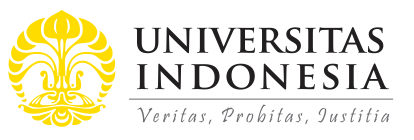Abstract
The uncertainty due to the COVID-19 outbreak has encouraged investors to look for value hedging instruments to minimize risk, which can be in the form of hedging assets or safe-haven assets. In response to it, this study aims to find out whether Bitcoin, Ethereum, and gold can behave as hedging and safe-haven assets before and amid the pandemic in Indonesia. The strategy is by observing the effects of volatility and return of Bitcoin, Ethereum, and gold on the Indonesian stock market. This study employed both quantile regression and simple linear regression models on data of daily closing price taken before and during COVID-19. This study finds that they can be hedge and safe-haven assets during the COVID-19 pandemic in Indonesia. The findings show some significant correlations between assets that can help investors determine which assets can be hedging instruments.
References
Aalborg, H. A., Molnar, P., & Vries, J. E. de. (2019). What can explain the price, volatility and trading volume of Bitcoin ? Finance Research Letters, 29, 255–265.
Antonakakis, N., & Kizys, R. (2015). Dynamic spillovers between commodity and currency markets. International Review of Financial Analysis, 41, 303–319. https://doi.org/10.1016/j.irfa.2015.01.016
Baker, H. K., & Nofsinger, J. R. (2010). Behavioral Finance: Investors, Corporations and Markets. John Wiley & Sons.
Baur, D. G., Hong, K., & Lee, A. D. (2018). Bitcoin: Medium of exchange or speculative assets? Journal of International Financial Markets, Institutions and Money, 54, 177– 189.
Baur, D. G., & Lucey, B. M. (2010). Is Gold a Hedge or a Safe Haven? An Analysis of Stocks, Bonds and Gold. In The Financial Review (Vol. 45). http://www.merriamwebster.com/.
Baur, D. G., & McDermott, T. K. (2010). Is gold a safe haven? International evidence. Journal of Banking and Finance, 34(8), 1886–1898. https://doi.org/10.1016/j.jbankfin. 2009.12.008
Beneki, C., Koulis, A., Kyriazis, N. A., & Papadamou, S. (2019). Investigating volatility transmission and hedging properties between Bitcoin and Ethereum. Research in International Business and Finance, 48, 219–227. https://doi.org/10.1016/j.ribaf.2019.01.001
Bouri, E., Gupta, R., Tiwari, A. K., & Roubaud, D. (2017). Does Bitcoin hedge global uncertainty? Evidence from wavelet-based quantile-in-quantile regressions. Finance Research Letters, 23, 87–95. https://doi.org/10.1016/j.frl.2017.02.009
Bouri, E., Hussain Shahzad, S. J., & Roubaud, D. (2020). Cryptocurrencies as hedges and safe-havens for US equity sectors. Quarterly Review of Economics and Finance, 75, 294–307. https://doi.org/10.1016/j.qref.2019.05.001
Bouri, E., Shahzad, S. J. H., & Roubaud, D. (2019). Co-explosivity in the cryptocurrency market. Finance Research Letters, 29, 178–183.
Buterin, V. (2014). Ethereum. Chen, M., & Zheng, Z. (2008). The impact of short selling on the volatility and market liquidity of stock markets: evidence from Hong Kong market.
Demir, E., Gozgor, G., Lau, C. K. M., & Vigne, S. A. (2018). Does economic policy uncertainty predict the Bitcoin returns? An empirical investigation. Finance Research Letters, 26, 145–149. https://doi.org/10.1016/j.frl.2018.01.005
Dyhrberg, A. H. (2016). Hedging capabilities of Bitcoin. Is it the virtual gold? Finance Research Letters, 16, 139–144. https://doi. org/10.1016/j.frl.2015.10.025
Hartono, P., & Rubiyanto, R. (2021). Can Cryptocurrency, Gold and Bonds Serve as Safe Haven for the Indonesian Capital Market? JURNAL EKONOMI KUANTITATIF TERAPAN, 1, 1–10. https://doi.org/https://doi. org/10.24843/JEKT.2021.v14.i01.p01
Hertwig, R., Barron, G., Weber, E. U., & Erev, I. (2004). Decisions from Experience and the Effect of Rare Events in Risky Choice.
Hood, M., & Malik, F. (2013). Is gold the best hedge and a safe haven under changing stock market volatility? Review of Financial Economics, 22(2), 47–52. https://doi.org/10.1016/j.rfe.2013.03.001
Huber, C., Huber, J., & Kirchler, M. (2021). Market shocks and professionals’ investment behavior – Evidence from the COVID- 19 crash. Journal of Banking and Finance, 133. https://doi.org/10.1016/j. jbankfin.2021.106247
Kenourgios, D., Samitas, A., & Paltalidis, N. (2011). Financial crises and stock market contagion in a multivariate time-varying asymmetric framework. Journal of International Financial Markets, Institutions and Money, 21(1), 92–106. https://doi.org/10.1016/j.intfin.2010.08.005
Koenker, R. (2005). Quantile Regression. Economic Society Monograph Series 38. Koenker, R., & Bassett, Jr. , G. (1978). Regression Quantiles. Econometrica, 46, 33–50.
Malmendier, U., & Nagel, S. (2011). Depression Babies: Do Macroeconomic Experiences Affect Risk Taking? The Quarterly Journal of Economics, 126(1), 373–416.
Mariana, C. D., Ekaputra, I. A., & Husodo, Z. A. (2021). Are Bitcoin and Ethereum safehavens for stocks during the COVID-19 pandemic? Finance Research Letters, 38. https://doi.org/10.1016/j.frl.2020.101798
Markowitz, H. (1952). Portfolio Selection. The Journal of Finance, 77–91.
Paule-Vianez, J., Prado-Román, C., & Gómez- Martínez, R. (2020). Economic policy uncertainty and Bitcoin. Is Bitcoin a safe-haven asset? European Journal of Management and Business Economics, 29(3), 347–363. https://doi.org/10.1108/EJMBE-07-2019-0116
Putriadita, D. (2021). Perkembangan Pasar Kripto Indonesia Menarik Exchange Global Masuk. Kontan. https://investasi.kontan. co.id/news/perkembangan-pasar-kripto-indonesia-menarik-exchange-global-masuk
Selmi, R., Mensi, W., Hammoudeh, S., & Bouoiyour, J. (2018). Is Bitcoin a hedge, a safe haven or a diversifier for oil price movements? A comparison with gold. Energy Economics, 74, 787–801.
Shahzad, S. J. H., Bouri, E., Roubaud, D., Kristoufek, L., & Lucey, B. (2019). Is Bitcoin a better safe-haven investment than gold and commodities? International Review of Financial Analysis, 63, 322–330. https://doi.org/10.1016/j.irfa.2019.01.002
Sharma, D. K., Pant, S., Sharma, M., & Brahmacari Shikha. (2020). Cryptocurrency Mechanisms for Blockchains: Models, Characteristics, Challenges, and Applications. In Handbook of Research on Blockchain Technology (pp. 323-348). Elsevier.
Sugiyono. (2013). Metode Penelitian Pendidikan Pendekatan Kuantitatif, Kualitatif, dan R&D. Alfabeta.
Tandelilin, E. (2010). Portofolio dan Investasi: Teori dan Aplikasi. Kanisius.
Wang, G. J., Xie, C., Wen, D., & Zhao, L. (2019). When Bitcoin meets economic policy uncertainty (EPU): Measuring risk spillover effect from EPU to Bitcoin. Finance Research Letters, 31, 489–497. https://doi. org/10.1016/j.frl.2018.12.028
Wu, S., Tong, M., Yang, Z., & Derbali, A. (2019). Does gold or Bitcoin hedge economic policy uncertainty? Finance Research Letters, 31, 171–178. https://doi.org/10.1016/j. frl.2019.04.001
Yuhanitha, N., & Robiyanto, R. (2021). Cryptocurrencies as a Hedge and Safe Haven Instruments during Covid-19 Pandemic. Journal of Accounting and Strategic Finance, 4(1), 13–30. https://doi.org/10.33005/jasf. v4i1.129
Zach, T. (2003). Political events and the stock market: evidence from Israel. International Journal of Business, 8.
Zaremba, A., Kizys, R., Aharon, D. Y., & Demir, E. (2020). Infected Markets: Novel Coronavirus, Government Interventions, and Stock Return Volatility around the Globe. Finance Research Letters, 35. https://doi. org/10.1016/j.frl.2020.101597
Zhang, D., Hu, M., & Ji, Q. (2020). Financial markets under the global pandemic of COVID- 19. Finance Research Letters, 36. 62
Recommended Citation
Wijaya, Carla A. and Ulpah, Maria
(2022)
"The Analysis of the Roles of Bitcoin, Ethereum, and Gold as Hedge and Safe-Haven Assets on the Indonesian Stock Market before and during the COVID-19 Pandemic,"
The Indonesian Capital Market Review: Vol. 14:
No.
1, Article 4.
DOI: 10.21002/icmr.v14i1.1140
Available at:
https://scholarhub.ui.ac.id/icmr/vol14/iss1/4
Included in
Business Analytics Commons, Finance and Financial Management Commons, Portfolio and Security Analysis Commons












